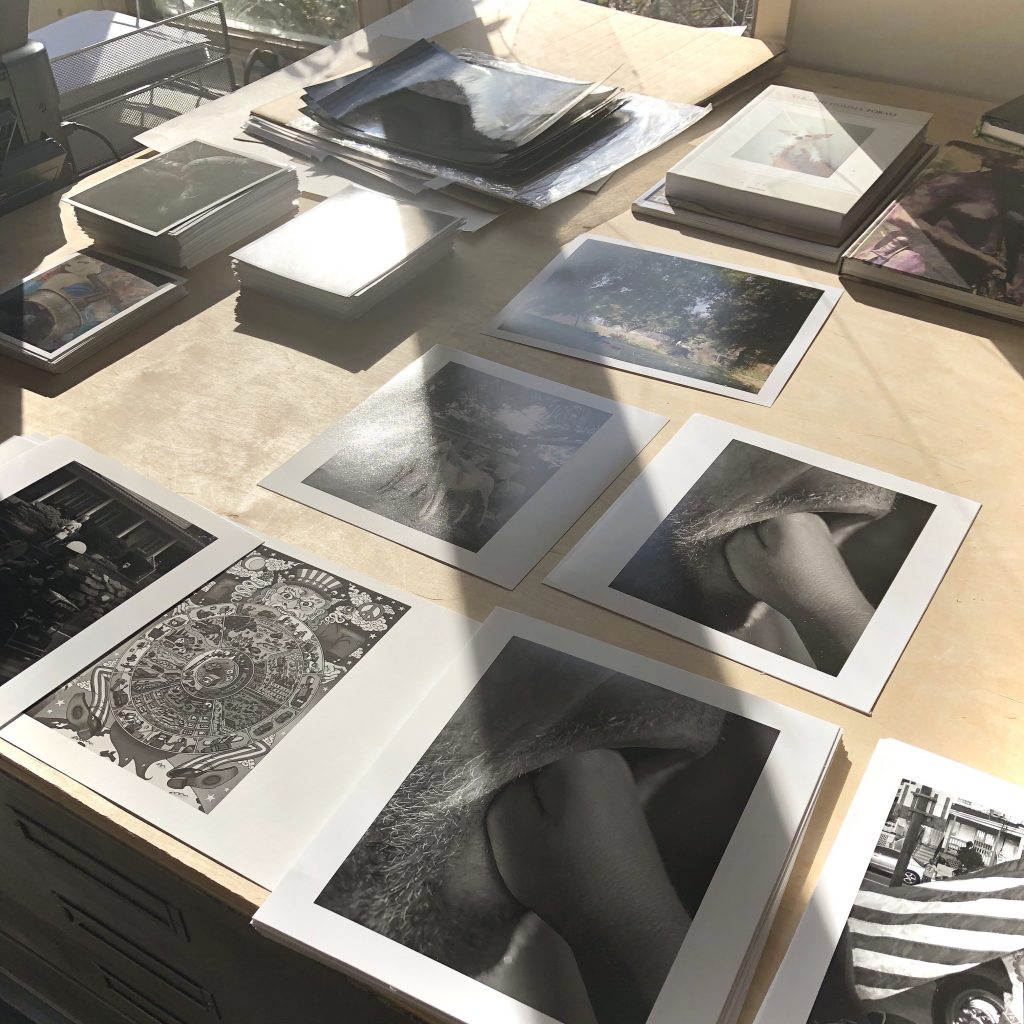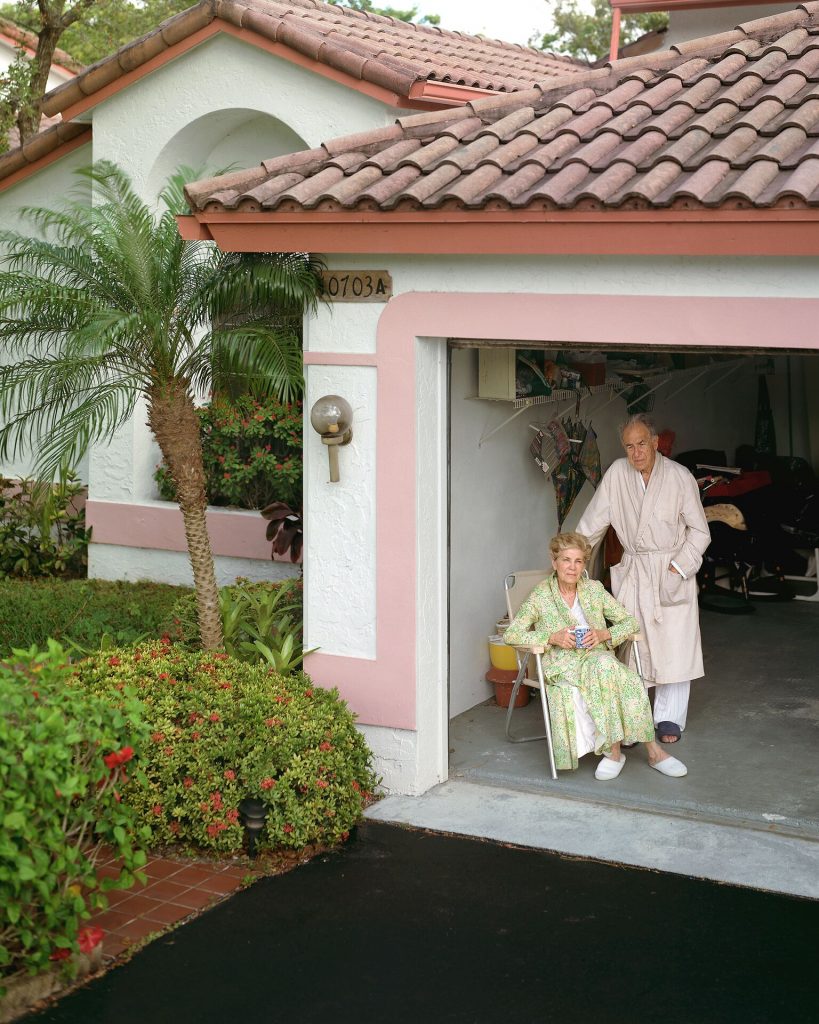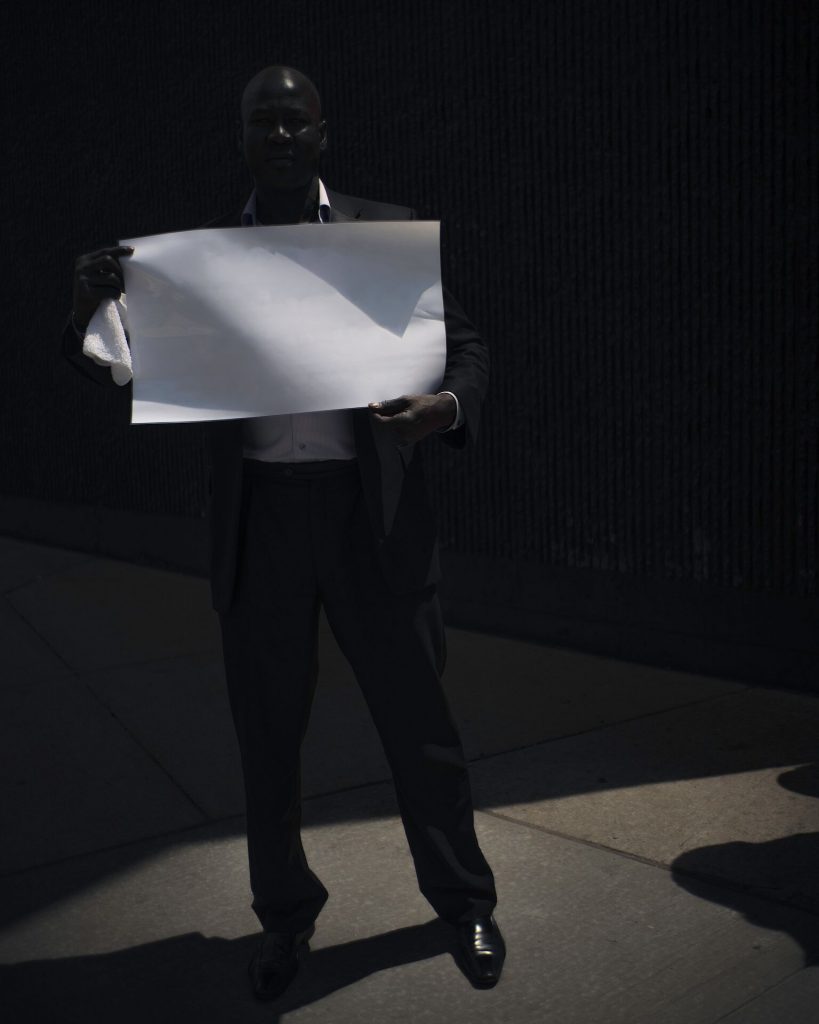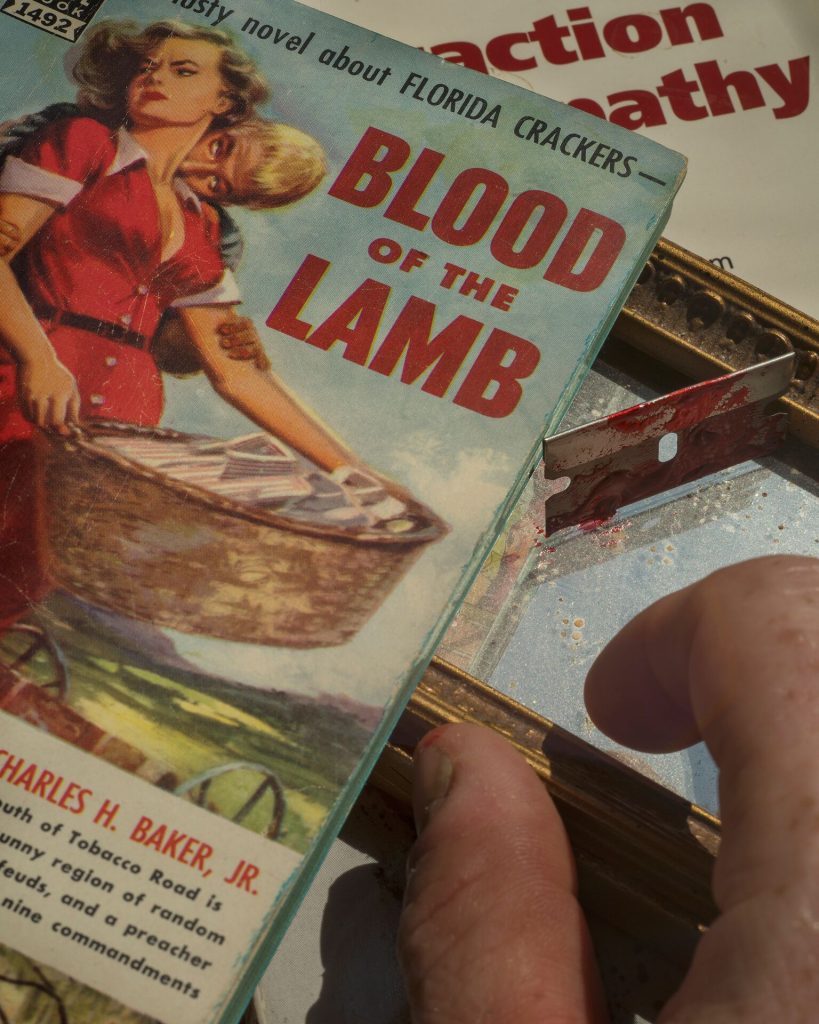Disclaimer: A publicist working with Schilt Publishing got in touch looking for a review of Mind the Gap. I don’t tend to review books, particularly if approached, but having really enjoyed Hesitating Beauty I thought this could be a great opportunity to see if Joshua was interested in a frank conversation about photobook publishing. Luckily, Joshua has given the questions posed a good deal of thought and has been refreshingly open about the publishing process. I hope this is of interest to readers here and truly I do recommend seeking out the book if you can…
Joshua, seeing as we are talking mostly about Mind the Gap it seems that the best way to start might be in asking you why this work, and the publication, matters to you?
I wouldn’t say Mind the Gap matters so much, It’s the conversation that the work is about which feels really important. The publication functions simply as a way to have a dialog of sorts with these issues. I don’t really know how to play a productive part of that exchange in any other way besides things like teaching and making work that creates the conditions to talk about it.
And the book is a key part of this? With Meadowlands and Hesitating Beauty, it seems as though the book as a medium really offers you something as an artist — what is this?
They were all really very different processes. Meadowlands didn’t start as a book it started as just pictures I was making. This was way before book making became so ubiquitous. A book or even a show really wasn’t even on my radar. In a way Hesitating Beauty didn’t start as a book either but it quickly lent itself to the medium once I started making some small prints. I like making books because I can work small. With a book I can see this thing from beginning to end. I feel that it can say the thing that I want to. If it falls apart ultimately it is on me. With a show, I tend to work backwards where the space dictates what is included and at what size. The parameters for what I am going to say is very different. In a way I don’t hold myself to the same standard. I am ok with shows falling apart a little bit or not saying all the things I want them to.

My favorite components of the book as a medium is how one reads it in such a way that confirms something that they may believe to be true and how a belief system is reinforced by something in the book itself. Basically, If you have a small hint of something that you think is true and apply it to the book that very thing becomes the glasses for which you read the entire book. A younger version of myself fought this as much as I could to make sure people where seeing exactly what I was. Letting go of this is a little scary but ultimately has ended up being really quite spacious.
Is this connected to the books permanence? Its longevity? It seems especially in a predominantly digital medium this is important to makers and readers alike?
I am not thinking consciously about permanence with the work. If anything, impermanence is the thing that drives my work. I do one day want to explore the digital realm of showing my work. Right now, the digital format for me really functions as a document for the actual print or the book not the piece itself. For now, I think it’s more connected to control. Feeling a bit unresolved about the work online I ultimately can’t control what happens to it. For example, there is an artist taking my photographs and turning them into design posters and fabrics. At first, I wanted to reach out and ask them to stop but then I was flattered that they would spend any real time with the work to consider using it in their own practice.

This is your second time working with Schilt, something that would certainly suggest a symbiotic relationship. Can you explain a little about what the two parties put in to the production of the book and why it is that you have chosen to work with Schilt again?
We worked together again because I was extremely pleased with Hesitating Beauty. The book was produced almost exactly how I wanted it. There was very little push to change anything that was not in the original design. Although he didn’t do Hesitating Beauty I know one of the designers (Henk VanAssen) that Schilt works with very well and I wanted to work with him. Henk was great to collaborate with. These things are really so difficult. Photographers spend years looking at a project only to have them hacked away by over- design. Henk was very conscious of the work that I had done, willing to push ideas while honoring the intent of the book. In the end we didn’t land far from where we started which for this book was ultimately the right move.
Is this important to you that your intent remains mostly unchanged — not that it isn’t challenged or supported but do you see the resulting book with you as author or a co-authored project?
Perhaps this sounds smug but I do not see the designers that I work with as co-authors at all. Co-designers but not co-authors. I would argue that with all my books I came to the design process with 99% of the layout done and 95% of the design done. My designs however are never in the right format and far from print ready. I use photoshop instead of InDesign to hack my way through the process. The designer then takes my pages and translates them into a format that can be used by the printer.

Where does price fit into the process of bookmaking? At $50 it is not a cheap publication and I wonder whether the price (or range) is set at the start or whether it is the product of all the other decisions that go into the production of the publication?
That is something that is set by the publisher. I have really no say in that stuff. I think Schilt Publishing weighs the cost of the book against the Amazon reduction. $50 becomes $35 but really not sure how any of that happens.
It is pretty hard to see the ‘work’ that is Mind the Gap without buying the publication, or seeing the ClampArt show at the moment — is this a conscious decision to hold back and keep something limited or perhaps you are keen to really curate or control the experience of those coming to the work?
I wish it was that thought through. Honesty, it is really just about not updating my website. Most the images are either on the galleries website or other publications that have interviewed or reviewed the work.
Do you have a strategy for getting the book into specific archives, libraries, schools and so on? Does this factor into your bigger plans for the book?
No, I don’t really have plans for the book in that sense. I do very little outreach to institutions to get the book placed. As a teaching artist with kids my time is so limited. If I am not teaching or with my kids I try and devote all my studio time to making work. Perhaps in another life I would have a gaggle of assistants that could help with these things, but I don’t see that happening anytime soon.
Who is it then that you want to see, or buy the book? Are you aiming for the book itself to primarily be read by photobook enthusiasts or are there other groups of people you are looking to reach?
That is a really important question. Often when a book comes out people ask you to come to different places to show the work and talk about it. I did a bunch of that before realizing that almost everyone coming to see these events were people that want to be doing it themselves. We end up talking to ourselves over and over again. Rarely, for many of us in the photography art world are we able to really reach outside of our own little echo chamber. That said it does become really beautiful when the work is able to transcend beyond our circles. With my first book Meadowlands that happened a little bit with people interested in the environment but more often with enthusiasts of New Jersey. Hesitating Beauty was a bit more successful in this realm and seemed to touch a note with caregivers, specifically those caring for parents or those suffering from mental illness. I am really not sure who the audience will be for Mind The Gap. It does seem to be hitting some strange notes that are trickling into all sorts of unintended interactions. The range has been somewhat disparate; from the Bernie Sanders Campaign wanting to collaborate to a warden of a Texas Prison connecting about a public works project. At this point, I am not sure where any of it is going just feeling grateful for the ability to be a part of the conversation.
What is a successful reading of Mind the Gap for you? What do you want (or do you even think about this?) people to hear when they look at the work?
I don’t really think there is a successful read as much as there is an unsuccessful read. For example, the book has about 20+ short stories in it. Some readings have taken the stance that based on my previous work certain stories must be grounded in truth while others must embrace fiction. It is not that I am bothered by the picking and choosing of real vs fiction it’s just a bit more effective if people embraced not knowing. In a way that is essentially what the work is about; our collective need to come to conclusions about things. It is about the state of being lost in confusion 99% of the time with only tiny glimpses of clarity. I like the Sanskrit word samsara and refer to it in the drawings of the wheel of samsara used in the end pages. I suppose this becomes a legend or a map for the book for anyone really wanting to dig in. Samsara translates to wandering and these drawings depict ancient and modern-day states that from a buddhist perspective prevent us from finding clarity. My favorite thing about them is that these obstacles have been updated but they haven’t changed we only think they have.

What role does the accompanying spiel/blurb/precis that accompanies the work do for this communication between you and the reader?
That’s a publisher thing and that has to do with marketing. If I had it my way there wouldn’t be anything, but I do understand the need.
Do you think consciously of the ways in which the book (this or previous) impacts you from a financial perspective or in terms of your career —
To the first part of your question photo-books at the scale that I am making them do not contribute to any real income. My finances are not directly tied to book sales at all. My income is generally balanced through the ebb and flow of teaching, art sales, grants and the occasional editorial job. As far as career, I think they are all intertwined and support each other.
Is it important today for photographers to be making books?
No not at all. Don’t hate me for this but I think there are way too many photo-books being made. I can’t tell you how many people tell me about a book they want to make. They see the book before they see the work. What is important for photographers to be making are long term realized projects that may or may not one day find themselves in the book format. The work has to come first. A photo-book should be the end result of every possible iteration. It’s a massive undertaking that should really not be seen as the goal but if anything the outcome.













